Christopher Cantwell had a very busy San Diego Comic-Con. The writer, who co-created the AMC TV show Halt and Catch Fire, had his creator-owned comic through Dark Horse’s Berger Books imprint, She Could Fly, optioned by the network. Later in the weekend, he was also announced as the writer of Marvel Comics’ new ongoing Doctor Doom title, which is to be illustrated by Salvador Larroca. It’s been a fast rise in the industry for Cantwell, who was kind enough to take some time out to discuss his many comics projects with The Beat…
The Beat: Tell me a little bit about where the idea for She Could Fly came from? Was it that opening scene, the characters…
Christopher Cantwell: It has its roots in an idea I had almost 20 years ago when I was in film school. It was about a woman who could fly who had a rotating fan strapped to her back. That was her superpower. She could jack the rotating fan into her brain and fly. It was something that was just on my hard drive in the background from when I was 19 years old.
Cut to, I’m at the Toronto Screenwriting Conference with my partner Chris Rogers. We were super jetlagged, and we went to the March for Science out there. For some reason, I was thinking about, and at that point I connected with [G. Willow Wilson] on Twitter, who was a big fan of Halt and Catch Fire. I DM-ed her, and I said, ‘If I had a comic book idea, what would I do with it?’
She said, ‘Well, you should talk to Karen Berger,’ which is like introducing someone to God. So, I wrote Karen, and she said, ‘I’ve got this new imprint that I’m really excited about. It’s being published by Dark Horse,’ and I kind of pitched her the idea. She said I needed to reframe it. I went off and thought about it, and put together a real pitch for her, and that’s when I grounded it in the character of Luna. I’d just gone through some pretty heavy mental stuff, just realizing and being diagnosed with things, and so, I decided to write about it for the first time in my life. I hadn’t even been talking about this stuff I had gone through when I was younger, and I had this character going through this.
The thing she locks onto is this woman who can fly. Everyone else is worried about the how and the what…Luna’s big thing is the why. Why does someone want to be in the air. That drives the book.
The Beat: It’s an easy thing for the reader to connect with as well. In comics, you’re not really interested in how the science works. It just has to be a baseline level of making sense, but the why of the character motivations is what brings audiences in.
Cantwell: Yeah, and it was fun to ground the story in a bystander. It’s from the POV of someone who saw something super, something amazing. It’s like if you or I walked out of a Starbucks, and Superman went by you at 100 miles per hour. It would change your life. Your life would be defined by that moment. Your grandkids would be sick of the story, or, tragically, you’d move on, you’d forget about it, which is kind of the news cycle today. With Luna, she’s the only one holding on after the woman explodes in the first issue.
The Beat: Congrats on the TV deal, that’s incredible. I know it’s in development, but one thing I wanted to ask: a quality I really liked in She Could Fly is the way you used the comics medium to depict mental health and make it really visceral. Are you thinking about ways to do that with TV?
Cantwell: I’m really in the early stages of this. I grew up Roman Catholic, so I don’t count my chickens before they hatch. I was kind of like, ‘TV? Okay, it’ll probably go away,’ and then it happened, so now I’m starting to think about the project and how it will conform to the medium. I think there will be some really interesting ways to do that. I was actually talking to Karen, and there are two different inner monologues that Luna has in the book. There’s her inner thoughts that are one font, and then there’s what Karen and I call the thought voice, which is like the scary voice.
Voice over is tropey, and I don’t want to do the kind of character narrating at you, the audience. What I want to do is have a constant internal dialouge between Luna’s voice in her head and the thought voice, which I think we can make through sound design something truly fucking terrifying, always creeping into her thoughts and being really invasive.
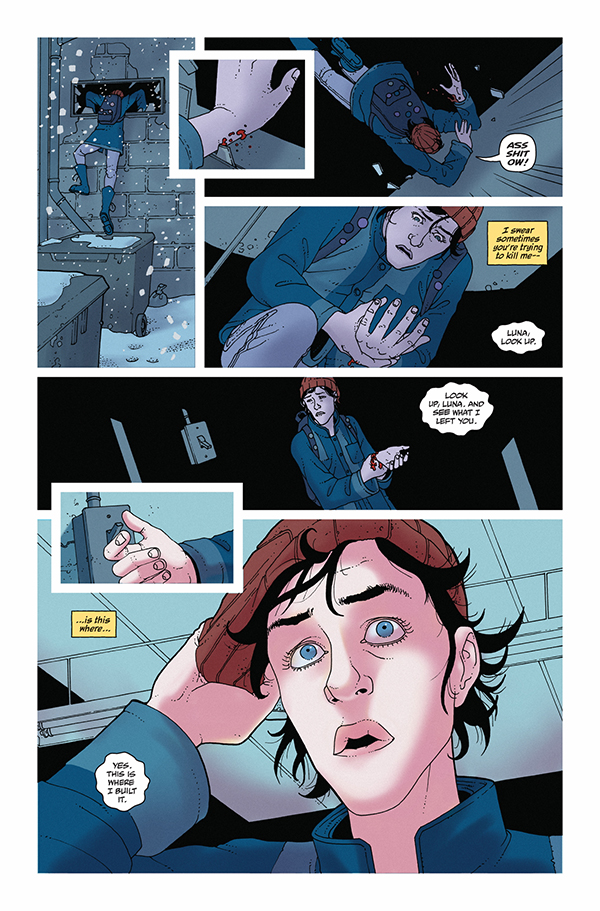
Cantwell: My whole family is from there and I love the city, but I grew up in Dallas and I had this kind of longing for Chicago. Now, I have a longing for Dallas, because I left Dallas, but what I love about Chicago is it’s a worker city, it’s a blue collar city, and it has far less pretense than New York. I love New York, New York is a great setting for most superhero stories, but it has such a self awareness. Chicago has a self awareness too, but it has brutal weather and people just kind of deal with their shit in a great way in Chicago.
Not a lot bothers people in Chicago, they just kind of roll with it. The flying woman over head, Chicago was a great place to have that happen and have people be like, ‘That’s crazy,’ and then go back to work or eating a hot dog.
The Beat: Let’s shift gears to your new book, Everything. What can you tell us about that book?
Cantwell: That was something where I really wanted to push the envelope. In my childhood, I spent a lot of time in retail centers with my mom: Sears, Dillards, JC Penny, Target—brick and mortar. There’s really a nostalgia for brick and mortar. Something I think you pick up here at the con, because you’re literally buying something from someone.
There’s also a dark underside to consumerism, and I’m sure everyone feels that here. You get really excited to go to the con, and then you get overwhelmed. There’s so much noisy bizarre-ness to it. It makes me really anxious. There’s an excitement and enthusiams, but there’s also a darker current of consumerism and American corporate nature. It all kind of gets rolled into one along with nostalgia—where we create this story. It lands right in the middle of the town and disrupts everything. We made a story called Everything, where there is literally everything for sale, but the undercurrent of it is: what’s their intentions?
[I.N.J. Culbard] and I, we brought it to a sci-fi level, which is something about the store is causing dread and psychic disturbances among certain people, where they’re having unexplained symptoms and they don’t know what’s going on. They’re also in this enthusiasm, but they feel apart from it, and they don’t get it, or they have a small business that’s going to be destroyed by this mega store. It’s these people who feel on the outside of a big zeitgeist thing, it’s just taken to such a level where they’re actually physically suffering because of it.
The Beat: So, Doctor Doom. Congrats on that as well. I know it’s Marvel so you can’t say too much about it, but will we see any of the elements She Could Fly? Maybe a close look at Doom’s psyche?
Cantwell: There’s stuff I pursue in everything. It’s such an honor to get in and touch Doctor Doom’s legacy. I got to do a small story for War Scrolls #3, and, again, that was from a bystander perspective. This will be Doom’s perspective. I deal a lot with, what does it mean to be happy? Luna thinks finding everything out about the woman who flies will fix her life and help fix her mind. Even getting in the air will make her happy. That can really trip people up in their lives. In Everything, the store wants people to be happy.
I think Doom, he’s a person who wants to be validated for his brilliance, for his leadership, for all of these things. He obviously lacks scruples at times, and he’s done some messed up stuff, but that’s a guy who’s very isolated. I want to explore Doom’s isolation and really what happens when you remove him from the comfortable fiefdom he’s set up for himself. What’s going on in his mind?
…I want to see what Doom’s private life is like, and that’s what I’m trying to do with [artist Salvador Larroca] and our editors. What’s it like when Doom goes into a room and closes the door when there’s nobody else in there?
She Could Fly: The Lost Pilot #5 is due out August 14. Everything #1 is launching on September 4, and Doctor Doom #1 does not have an announced release date yet.


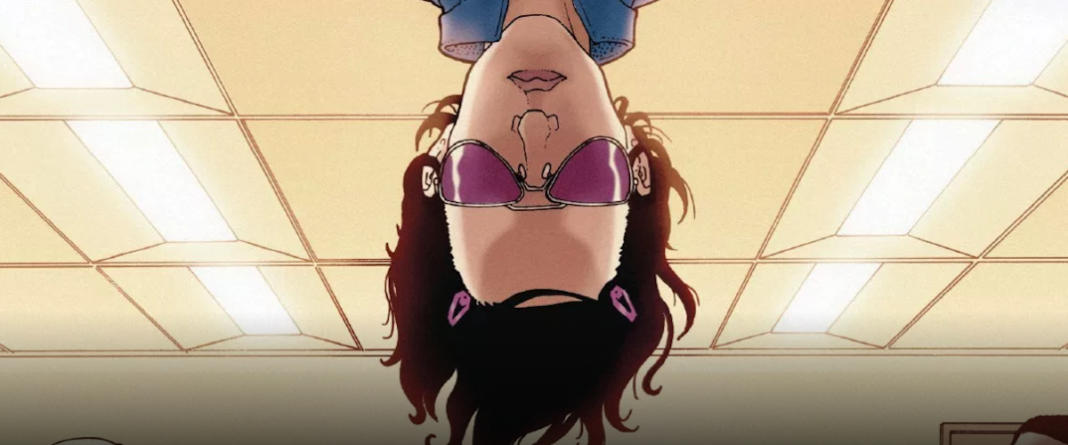
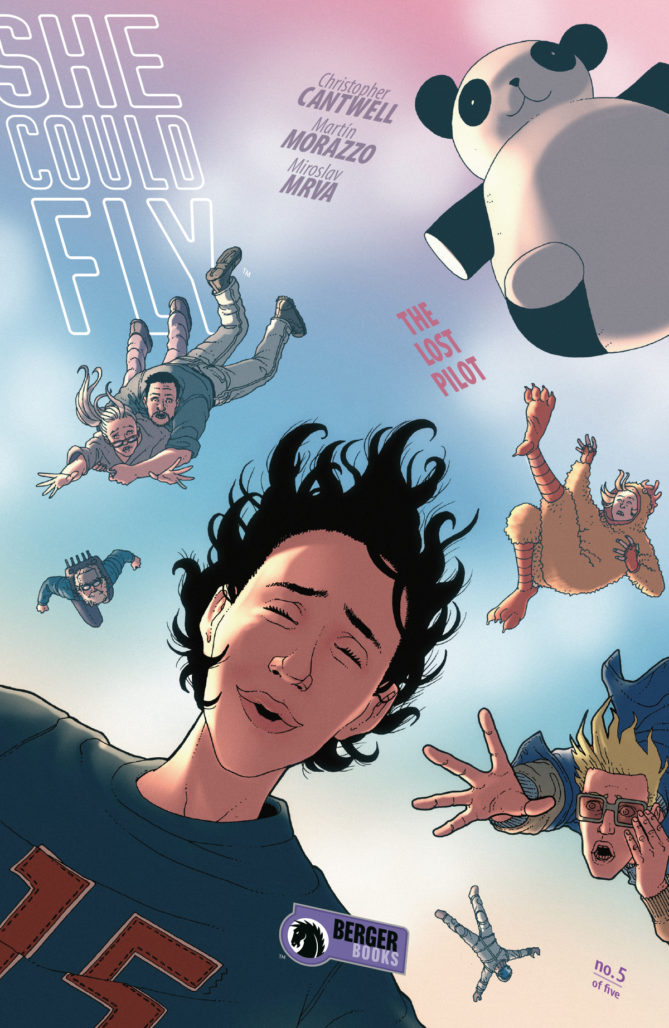
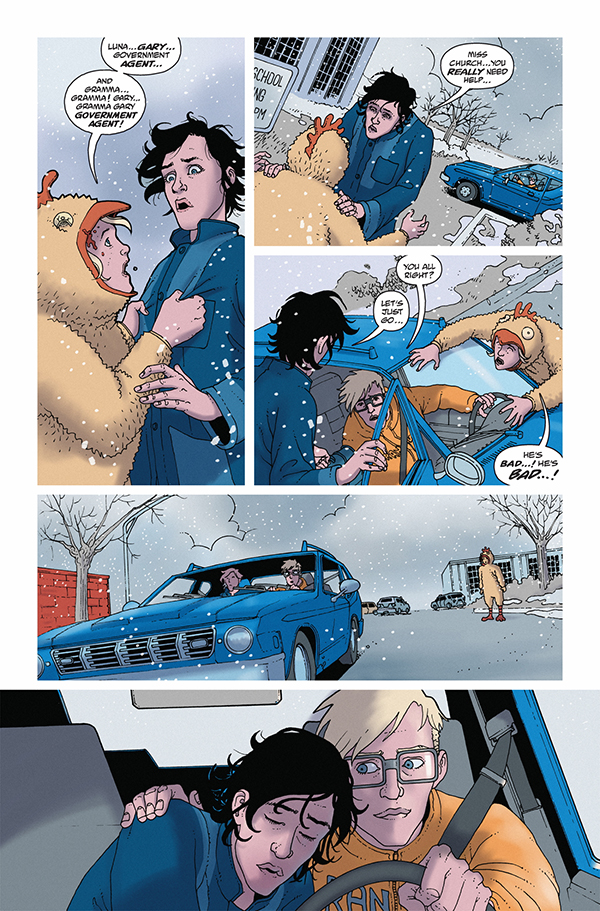
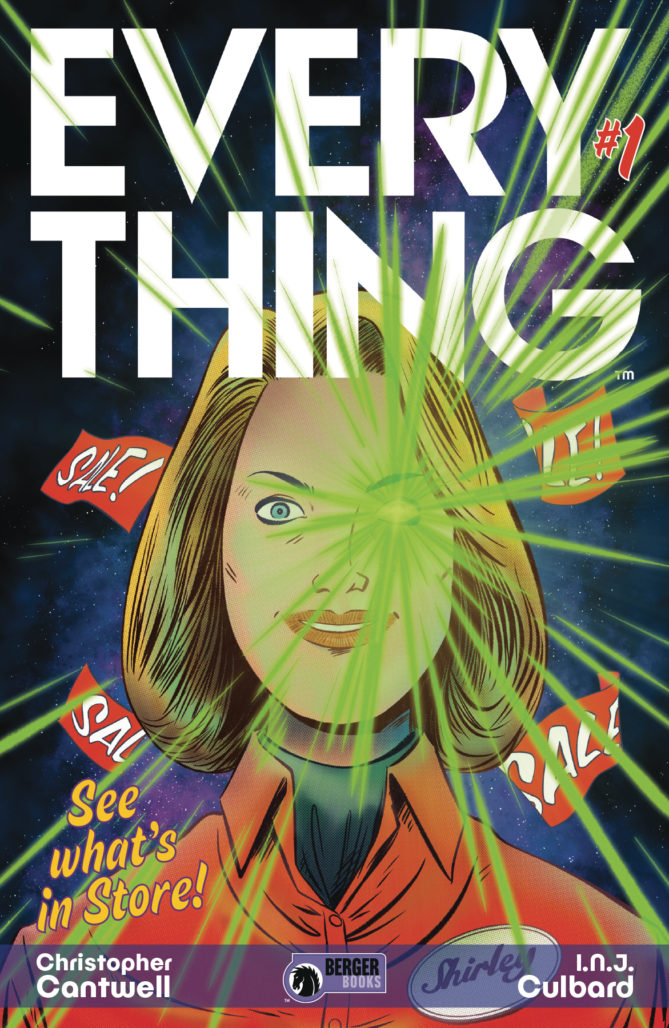
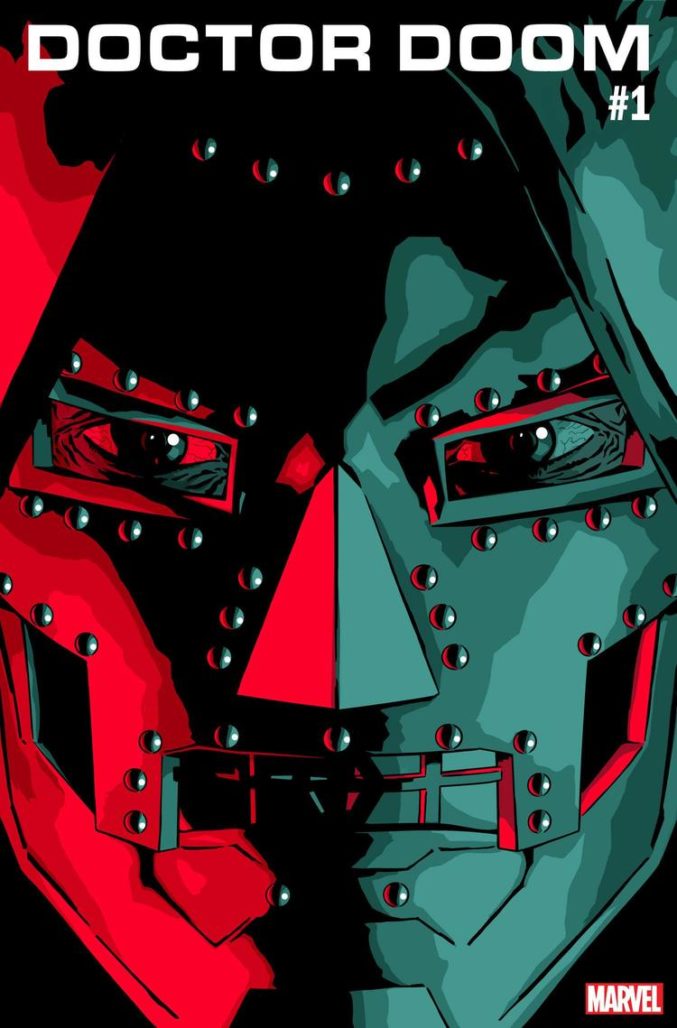
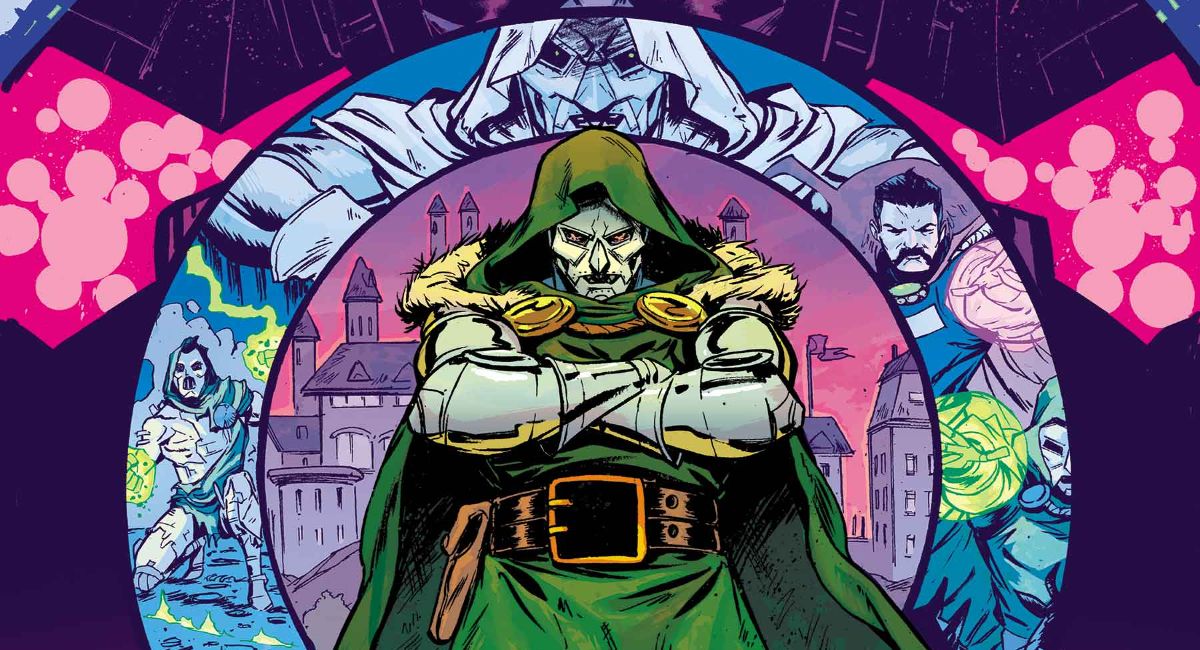

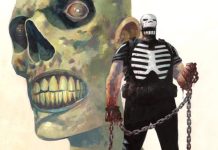




Comments are closed.